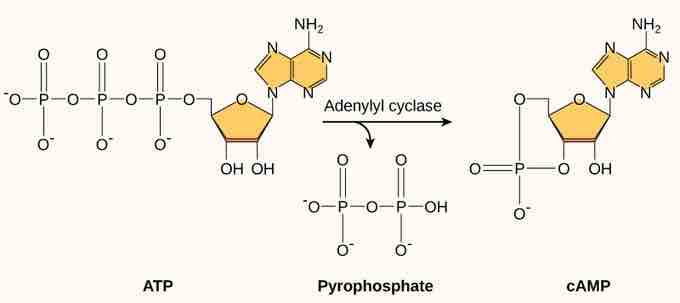Increase in Cellular Metabolism
As the environments of most organisms are constantly changing, the reactions of metabolism must be finely regulated to maintain a constant set of conditions within cells. Metabolic regulation also allows organisms to respond to signals and interact actively with their environments. Two closely-linked concepts are important for understanding how metabolic pathways are controlled. Firstly, the regulation of an enzyme in a pathway is how its activity is increased and decreased in response to signals. Secondly, the control exerted by this enzyme is the effect that these changes in its activity have on the overall rate of the pathway. For example, an enzyme may show large changes in activity (i.e. it is highly regulated), but if these changes have little effect on the rate of a metabolic pathway, then this enzyme is not involved in the control of the pathway.
The result of one such signaling pathway affects muscle cells and is a good example of an increase in cellular metabolism. The activation of β-adrenergic receptors in muscle cells by adrenaline leads to an increase in cyclic adenosine monophosphate (also known as cyclic AMP or cAMP) inside the cell . Also known as epinephrine, adrenaline is a hormone (produced by the adrenal gland attached to the kidney) that prepares the body for short-term emergencies. Cyclic AMP activates PKA (protein kinase A), which in turn phosphorylates two enzymes. The first enzyme promotes the degradation of glycogen by activating intermediate glycogen phosphorylase kinase (GPK) that in turn activates glycogen phosphorylase (GP), which catabolizes glycogen into glucose. (Recall that your body converts excess glucose to glycogen for short-term storage. When energy is needed, glycogen is quickly reconverted to glucose. ) Phosphorylation of the second enzyme, glycogen synthase (GS), inhibits its ability to form glycogen from glucose. In this manner, a muscle cell obtains a ready pool of glucose by activating its formation via glycogen degradation and by inhibiting the use of glucose to form glycogen, thus preventing a futile cycle of glycogen degradation and synthesis. The glucose is then available for use by the muscle cell in response to a sudden surge of adrenaline—the "fight or flight" reflex.

Formation of Cyclic AMP
This diagram shows the mechanism for the formation of cyclic AMP (cAMP). cAMP serves as a second messenger to activate or inactivate proteins within the cell.